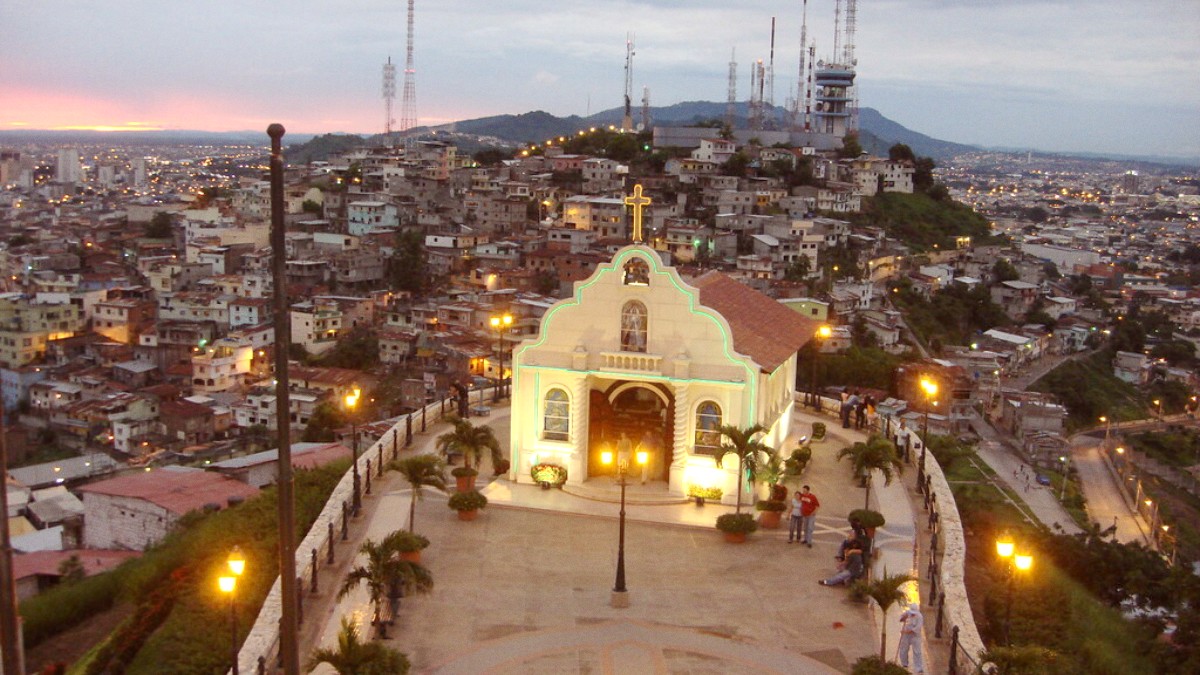
Pacific Coast And Lowlands, Ecuador
Lightweight, breathable, and quick-drying fabrics (cotton, linen, moisture-wicking synthetics) are best year-round. Loose-fitting clothes aid air circulation. During the wet season (December to May), focus on materials that handle moisture well. A Lightweight, packable rain jacket or a Compact umbrella is necessary for sudden, heavy downpours. Quick-drying clothes are still beneficial due to high humidity. The dry season (June to November) is still warm; a light sweater, long-sleeved shirt, or Shawl might benefit cooler evenings or strongly air-conditioned indoor spaces.
Dress for your planned activities. For city sightseeing, comfortable shorts, t-shirts, light dresses, or skirts are appropriate; prioritize comfort for walking. For religious sites, wear respectful attire (shoulders and knees covered). For swimming at nearby beaches, pack your Swimsuit, beachwear, and a cover-up for coastal town trips. For formal events, smart casual to semi-formal attire is suitable. Men might wear a collared shirt and slacks; women, a dress or smart trousers and a blouse.
You will walk on uneven pavements and cobblestone streets (Las Peñas). Flip-flops are for casual wear.
During the wet season, water-friendly footwear is important. Avoid materials that do not dry quickly.
Dressier sandals or closed-toe shoes suit dining out at nicer restaurants.
Keep your documents secure and accessible. Copies are a must. Store digital scans securely on a cloud storage service (e.g., Google Drive, Dropbox) and email a copy to yourself and a trusted contact. Keep copies separate from your original passport.
Ecuador's electrical standards match North America (120V, 60Hz, Type A/B plugs). If you travel from outside North America, a Universal travel adapter is necessary. A Voltage converter is usually not needed for modern dual-voltage electronics. Most modern smartphones are compatible with Ecuadorian networks. Ensure your phone is unlocked for a local SIM card. Prepaid data packages are affordable. Consider a prepaid eSIM before your trip for immediate connectivity if your phone supports it.
A standard digital camera or your Smartphone handles most tourist photos. A Lightweight tripod assists night shots or panoramas. For active pursuits or wet season travel, an Action camera like a GoPro is durable and waterproof. Bring extra memory cards and batteries. Download offline maps for Guayaquil before arrival.
Use services like Google Drive, Dropbox, or iCloud to back up photos and documents regularly.
This keeps your memories and data safe even if a device is lost or stolen.
Store digital copies of important documents to simplify replacements if originals are lost.
A well-stocked personal health kit provides peace of mind. Include standard items like various sizes of Band-aids, antiseptic wipes, pain relievers (Ibuprofen, Acetaminophen), anti-diarrhea medication (e.g., Imodium), and rehydration salts. Add blister treatment for walking. Carry all prescription medications in their original containers with clear labels. Bring a doctor's note or a copy of your prescription, especially for controlled substances. Pack enough for your entire trip plus a few extra days. Pack allergy medicine, antacids, cold and flu remedies, and Motion sickness medication if you are prone to it.
High-DEET insect repellent or one with picaridin is important against mosquito-borne diseases. Broad-spectrum sunscreen (SPF 30 or higher) is necessary for the intense tropical sun. A Wide-brimmed sun hat and UV-protective sunglasses offer additional protection. While bottled water is widely available, carrying a Personal water filter (LifeStraw) or Steripen UV water purifier can aid sustainability, emergencies, or more rural visits.
Comfortable walking shoes are your most important item. A Small daypack for water, sunscreen, and small purchases. This equips you for extensive city exploration.
For day trips to beaches or nature reserves, pack a swimsuit and a Quick-dry beach towel. Quick-dry clothing helps after a swim. If bird watching, Binoculars are beneficial. Most basic gear can be purchased or rented locally.
For general tourism in Guayaquil, most gear (like basic snorkeling equipment for beach trips) can be purchased or rented locally if needed. However, personal items like comfortable walking shoes are always best brought from home for fit and comfort.
Small items make a big difference in comfort and security. For transportation, a Travel neck pillow, Eye mask, and Earplugs greatly improve comfort during long flights or bus journeys. For security, TSA-approved locks for checked bags. A Travel money belt or neck wallet worn under clothing keeps passport, cash, and credit cards secure. An RFID blocking wallet protects cards from electronic theft.
Reusable items reduce plastic waste and offer convenience. A Reusable water bottle keeps you hydrated in the heat; an insulated bottle keeps water cool. A Reusable shopping bag serves market visits. Reusable utensils contribute to reducing single-use plastic. A sturdy, compact umbrella is useful during the wet season for sudden downpours. Pack specific brands of sunscreen or insect repellent you prefer, personal hygiene products, or certain over-the-counter medications that might be hard to find or more expensive in Ecuador.
For coffee or tea, reducing disposable cup use.
For groceries or souvenirs, avoiding plastic bags.
A biodegradable alternative for personal hygiene.
Shampoo bars and solid soap reduce liquid waste.
Limit duplicate items to save space and weight. Roll clothes tightly or use packing cubes to maximize luggage capacity.
Pack a small emergency kit in your carry-on with essentials like medications and a change of clothes in case checked luggage is delayed.